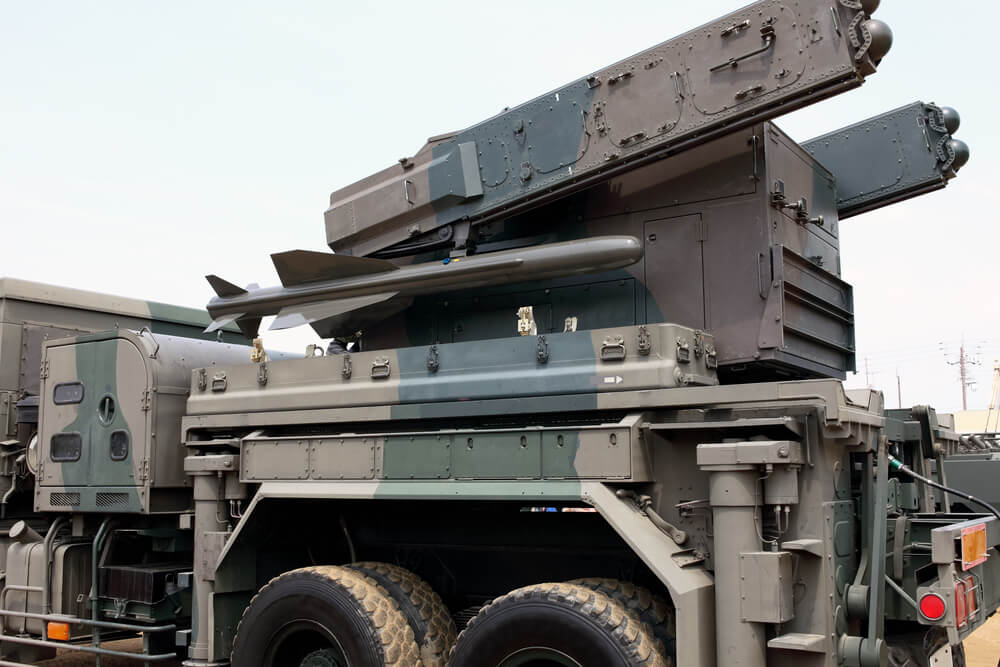US withdraws from rocket treaty with Russia: is the world waiting for a new cold war
Starting from 2 February, the USA will unilaterally suspend all obligations that Washington assumed in 1987, having signed the Treaty on the Elimination of Intermediate-Range and Shorter-Range Missiles (INF) with Moscow, and will begin the procedure for withdrawing from the treaty.

Фото: Depositphotos
This was February 1 announced by US President Donald Trump, writes with the BBC.
A statement by US Secretary of State Mike Pompeo says that the US authorities will send Russia official notice of the US withdrawal from the INF Treaty after six months, if Moscow does not return to compliance with the treaty.
On February 2, the deadline that Washington gave Moscow to resolve the issue with the 9M729 missiles expires - according to the American side, the characteristics of these weapons violate the INF Treaty, so the United States demands that Russia destroy them. Moscow insists the missiles are not covered by the agreement and responds by accusing Washington of violating the treaty.
The INF Treaty is one of the most important agreements that ensured a state of global “strategic stability”, practically guaranteeing that a nuclear war would not break out. Now this state is under threat.
Missiles of the wrong system
US President Donald Trump announced the United States' intention to withdraw from the treaty on October 20, 2018. He cited violations of the treaty by the Russian side as the reason for his withdrawal: “They have been violating it for many years. And we're not going to let them violate the nuclear agreement and make weapons."
Washington claims that Russia has secretly developed a new cruise missile, the 9M728, based on the 9M729 missile for the Iskander-M operational-tactical complex. Its range, according to the US, in violation of the treaty, significantly exceeds 500 kilometers. According to the Americans, they have evidence of the creation of such a missile and its testing. In addition, the new rocket even looks different from the old one - it is noticeably longer.

Infographics: BBC
Russia denies these accusations, as proof, it even demonstrated a new product, but not the 9М729 rocket itself, but the transport and launch container for it. In comparison with the container for 9М728, it really turned out to be longer. At the same time, pointing to the container, the Russian military explained that the rocket is longer not due to an increase in the fuel tank, but because of a larger warhead and a new navigation system.
Russia, in response, accuses the United States that they are actually testing their violators of the INF squadron when they launch targets when testing missile defense systems. In fact, these targets are conventional medium-range missiles. In addition, Moscow is convinced that the Mk 41 launchers of the SM-3 interceptor missile systems Aegis Ashore in Poland and Romania are suitable for launching Tomahawk cruise missiles. Finally, Russia claims that some American drones also actually violate the INF.
Americans reject these accusations, explaining that other software is needed to launch cruise missiles from Mk 41 launchers.
The last requirement of the United States was to destroy the 9М729 missiles, which, according to the Americans, violate the treaty. Russia called it an ultimatum and accused America of seeking to withdraw from the treaty at any cost.
The parties tried to come to an agreement. Last Thursday, a meeting was held between Russian Deputy Foreign Minister Sergei Ryabkov and US Deputy Secretary of State Andrea Thompson. However, after the meeting, Ryabkov said that it was not possible to reach an agreement, and the United States, in his words, took a “destructive, extremely harsh tonality” position.
Strategic stability
The Intermediate-Range Nuclear Forces Treaty is one of the key documents that, together with agreements on the non-proliferation of nuclear weapons, the limitation of strategic offensive arms and missile defense, have provided the world with so-called strategic stability.
The term “strategic stability” in this case means a state in which countries with the largest nuclear arsenals have no point in starting a war—it is impossible to win it. For people, strategic stability was manifested in the fact that the Cold War never turned into a “hot” one.
The basis of strategic stability is nuclear deterrence, that is, the prevention of military conflict under the threat of the use of nuclear weapons. Nuclear deterrence is based on the “principle of mutually assured destruction”, which emerged during the Cold War and continues to operate to this day. According to this principle, neither side can strike so hard as to completely disarm the enemy, and he would not be able to respond with an equally strong blow.
Than small missiles are dangerous
Nuclear deterrence worked against intercontinental ballistic missiles, the launch of which could be detected by means of a missile attack warning system, and a long flight time provided an opportunity to deliver a retaliatory strike. The same applies to strategic bombers.
But it does not work at all if the flight time of the rocket is measured in minutes.
Short-range and medium-range missiles were one of the most serious factors that prevented strategic nuclear deterrence. Able to carry nuclear warheads, these missiles were almost impossible to intercept and shoot down. It just did not have enough time.
They also did not leave the opportunity to launch a retaliatory strike, when one of the opponents manages to launch their missiles after detecting a launch from the opposite side.
Finally, their mobile launchers are also very difficult to detect and destroy with the first strike.
The presence of short- and medium-range missiles could provoke a military conflict - their presence near the borders threatened a strike that was almost impossible to repel. And this could provoke the enemy into a preemptive nuclear strike.
The Cuban missile crisis was provoked by the medium-range missiles that the United States deployed in Turkey and the USSR in Cuba.
In 1987, the USSR and the USA agreed to destroy this class of weapons. In addition, a mechanism was also created to monitor its implementation.
After 30 years, circumstances have seriously changed.
New threats
In addition to short- and medium-range missiles, missile defense and strategic submarines were considered destabilizing factors of strategic stability. The first is due to the potential ability to weaken a nuclear strike by shooting down some of the missiles, and the second is due to the possibility of their covert placement in the world's oceans.
Nevertheless, they were not as serious a threat to the world as medium-range and shorter-range missiles. In addition, the missile defense threat was largely eliminated by the 1972 agreement of the year.
However, in the 30 years that have passed since the signing of the INF Treaty, cybernetic weapons, high-precision non-nuclear weapons, and space weapons have been added to these two threats to stability. Finally, stability began to be threatened by the activities of third countries and international terrorism.
Alexey Arbatov in the article “The Role of Nuclear Deterrence in Strategic Stability. Guarantee or Threat” on the website of the Carnegie Moscow Center described possible triggers of a nuclear conflict in the modern world.
“Space weapons and cyber warfare will likely gain the ability to jam early warning systems (missile attack early warning systems) or induce false alarms on their part. The proliferation of sea-based nuclear missiles throughout the world creates the danger of provocative “anonymous” strikes by a third party from under water. The creation of hypersonic systems will deprive ground-based early warning radars of the ability to timely determine the flight path of enemy missiles and the area where their warheads will fall, which means that a retaliatory strike will have to be launched immediately according to the signal from satellites, which periodically issue a false alarm,” he wrote.

Фото: Depositphotos
Chinese arsenal
The INF Treaty was prepared in a bipolar world—strategic stability was largely determined by the relations between the USSR and the United States.
But while Russia and the United States complied with the terms of the treaty and did not develop short-range and medium-range missiles, China was successfully engaged in this. And this does not suit Washington, since hundreds of medium-range missiles, which China probably has, potentially threaten US naval forces in Southeast Asia.
Washington is not alone in this discontent. In 2007, Russia's chief of staff, Yuri Baluyevsky, reproaching the United States in the deployment of anti-missile defense systems in Europe, said that Russia was not satisfied that only two countries complied with this treaty.
“The INF Treaty between Moscow and Washington is of an open-ended nature, but the possibility of exiting it exists if one of the parties provides convincing evidence of the need for withdrawal. Today there is such convincing evidence - many countries are developing and improving medium-range missiles,” the general said, but did not indicate who exactly he meant.
At present, China has the most impressive arsenal of medium and short-range missiles. China has relied on the development of rocket technology after analyzing the Gulf War in 1991, said BBC senior researcher at the Center for Comprehensive European and International Studies at the HSE Vasily Kashin. At that time, one of the most effective weapons in Iraq was upgraded (with an increased range) ballistic missiles built on the basis of the Soviet P-17.
Over the past 30 years, China has been improving its arsenal of shorter- and intermediate-range missiles, improving their accuracy and other performance. “From Chinese military literature it follows that this type of missile is assigned many tasks that are performed by the air force in Western countries,” Kashin said. “A large arsenal of such missiles allows the Chinese to hit targets throughout the Asia-Pacific region. At the same time, the high cost and not very high effectiveness of missile defense means that it is impossible to defend against them.”
In the zone of destruction of Chinese missiles reaching the island of Guam, are all US military facilities in the region and the military bases of their allies.
The main part of the missiles does not carry nuclear charges, but there are also nuclear missiles in the Chinese arsenal. The Chinese, according to Kashin, view missiles as one of the key components of their armed forces.
For Russia, the arsenal of Chinese short-range and medium-range missiles also poses a potential threat, because Russian ports in the Far East and important military bases, including strategic ones, are in the affected area. True, as Vasily Kashin notes, the threat of a decapitating strike for Russia is not created by Chinese missiles.
Stability house
It’s too early to say that the INF Treaty has finally become outdated, and that it is necessary to abandon it.
“He remained the only cornerstone of the entire system of regimes limiting nuclear weapons,” said Alexei Arbatov.
The problem is that not only nuclear deterrence provided strategic stability. If it can be compared with the core of this cumbersome structure, then there is also a whole system of international treaties that, like props, have prevented this building from collapsing all these years.
This circumstance was fully manifested during the Cuban missile crisis - the most serious in post-war history, when the world stood on the brink of nuclear war. Then nuclear deterrence not only failed to prevent the conflict, but also provoked its escalation.
To limit the development of nuclear weapons (and to a large extent under the influence of the Cuban Missile Crisis), the Strategic Arms Limitation Treaties SALT I and SALT II were signed in the 1970s. After the collapse of the Soviet Union, the United States and Russia concluded treaties on their reduction in the 1s - START-2 and START-1990, and in 1 - START-2.
Strategic stability together with these agreements was supported by the Treaty on the Non-Proliferation of Nuclear Weapons, the Treaty on Missile Defense 1972 of the Year, and, finally, the Treaty on the Elimination of Intermediate-Range and Short-Range Missiles.
According to the head of the Russian Council on International Affairs, Andrei Kortunov, after the US withdraws from the treaty on the elimination of short-range and medium-range missiles, the offensive arms reduction treaty (START), signed by Barack Obama and Dmitry Medvedev in 2010, will almost not be extended.
“Of course, the first victim may be the START-3 treaty. Under current conditions, there is no dialogue at all with the United States about extending this treaty. And under the current conditions, it is difficult to expect that such a dialogue will be productive. But broader consequences are also possible, primarily for the nuclear nonproliferation regime. The next review conference should take place in 2020, and under unfavorable circumstances it may be the last,” Kortunov said.
The current deterioration in relations between Russia and the United States could be perceived by other states as an example of how the two countries with the largest nuclear arsenals cannot agree - “so what do we want from everyone else?” he warns.
What's next
According to one of the sources of the Bloomberg agency, the Pentagon is not only planning to announce the suspension of the treaty, but also notified the Senate Commission on Armed Forces that the US administration is going to withdraw from the treaty in six months.
And if in half a year the INF Treaty is likely to go down in history, does this mean that Russia and the United States will immediately start developing, producing and deploying previously banned missiles?
The most optimistic scenario that you can count on is if the United States and Russia, after withdrawing from the treaty, declare that they will voluntarily comply with its restrictions, said Alexander Yermakov, a military commentator at the Russian International Affairs Council.
However, he said, it is better to count on a more realistic scenario in which the United States and Russia develop new missile systems, but the Americans do not deploy them in Europe. “This is supported by numerous statements by European officials that there are no plans to deploy the systems in Europe,” says Ermakov. True, he stipulates that we are most likely talking only about nuclear complexes.
In the United States and Russia, there is a well-established production of medium-range cruise missiles, sea-based and air-based, which can quickly be adapted to ground-based launchers for several years, says Vasily Kashin.
No country has any ready-made medium-range ballistic missiles, although in this area, according to an expert, Russia has advanced further than the United States. But both countries lag far behind China.
According to Kashin, the opposition of China and the United States will not be in favor of the latter, since China has an advantage in this field for decades. According to him, in the few years that the United States will need to develop and test missiles, China will be able to dramatically increase the production of existing medium-range ballistic missiles and invest in the development of new ones.
According to Andrei Kortunov, the world is entering a period when it will have to live for some time without nuclear arms treaties: “This is a gray zone in which there will be mutual accusations, mutual criticism, a little military hysteria, definitely an arms race, perhaps not on the same scale as during the Cold War, but it will be in a certain form.”
He believes that it is hardly worth counting on the speedy conclusion of a new treaty on the limitation of nuclear weapons between different members of the nuclear club. But work in this direction, he believes, will lead to improved contacts between the military. This process will create a system that increases trust, and, as a result, stability.
“But what is missing, and this is the main thing, is the political will that was there throughout the “golden age” of nuclear arms control. Leaders in America, Russia, and China do not view arms control as a priority. They do not consider the threat of nuclear war to be serious. There is no political pressure, no anti-war movement, people in Europe and America can think about migration, climate change, international terrorism, but the threat of nuclear war is not among the primary threats,” Kortunov said.
After all, he believes, it is possible that an understanding of the seriousness of the threat may emerge in the event of a “Carribes crisis 2.0.”
Read also on ForumDaily:
Everyone hid: it turned out scandalous details of the meeting between Putin and Trump
American intelligence called the main threats 2019 of the year
Study: what will be the war between NATO and Russia
Subscribe to ForumDaily on Google NewsDo you want more important and interesting news about life in the USA and immigration to America? — support us donate! Also subscribe to our page Facebook. Select the “Priority in display” option and read us first. Also, don't forget to subscribe to our РєР ° РЅР ° Р »РІ Telegram and Instagram- there is a lot of interesting things there. And join thousands of readers ForumDaily New York — there you will find a lot of interesting and positive information about life in the metropolis.











